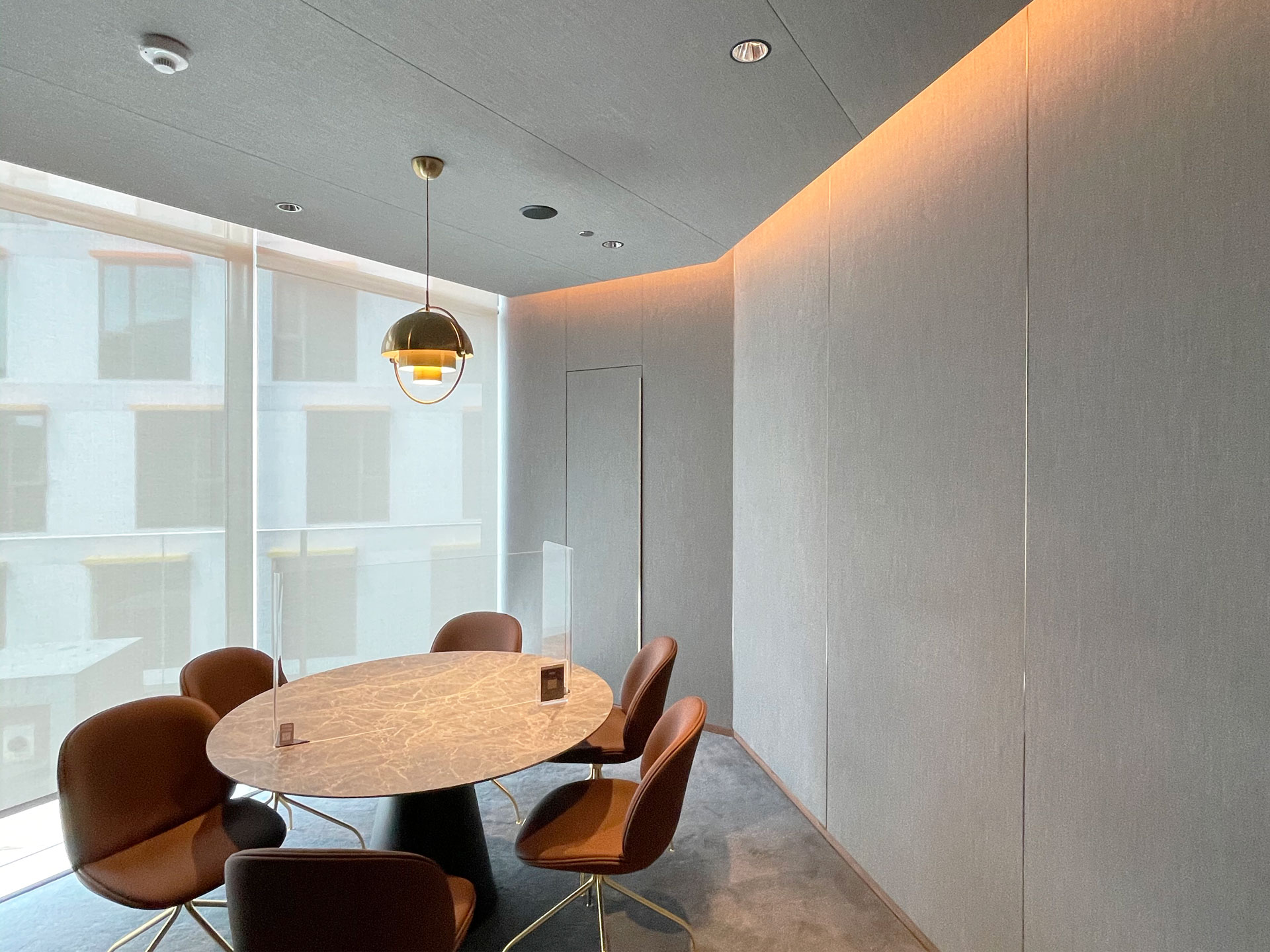
Enhancing Acoustic Comfort in Open Offices
Open office layouts have become increasingly popular due to their potential to foster collaboration and flexibility. However, these spaces often suffer from noise-related issues that can impede productivity and employee well-being. Integrating acoustic fabric panels offers an effective solution to manage sound and enhance the acoustic comfort of open offices. This article explores the benefits, design considerations, and implementation strategies for acoustic fabric panels in open office environments.

Benefits of Acoustic Fabric Panels
Noise Reduction
Acoustic fabric panels are designed to absorb sound waves, reducing noise levels in open office layouts. These panels can significantly decrease background noise, making it easier for employees to concentrate and communicate. By mitigating sound reflections and reverberations, acoustic fabric panels create a quieter and more conducive working environment².
Improved Speech Intelligibility
In open office settings, clear communication is essential for effective collaboration. Acoustic fabric panels enhance speech intelligibility by minimising echo and background noise. This improvement allows employees to hear and understand each other more clearly, reducing the need for repetition and enhancing overall communication efficiency³.
Aesthetic Integration
Beyond their functional benefits, acoustic fabric panels can be customised to complement the office’s interior design. Available in a wide range of colours, patterns, and textures, these panels can enhance the visual appeal of the workspace. This customisation helps maintain a cohesive design aesthetic while addressing acoustic challenges⁴.

Design Considerations for Acoustic Panels
Panel Placement
Strategic placement of acoustic fabric panels is crucial for maximising their effectiveness. Panels should be installed on walls, ceilings, and partitions to target specific noise sources and problem areas. For example, placing panels near workstations, meeting areas, and communal spaces can help manage noise levels in these high-traffic zones⁵.
Panel Types and Configurations
Different types of acoustic panels serve various purposes. Wall-mounted panels are effective for reducing lateral sound transmission, while ceiling-mounted panels (clouds or baffles) address vertical sound propagation. Free-standing panels and acoustic partitions can create flexible, sound-absorbing barriers within the open office layout, offering additional privacy and noise control⁶.
Material Selection
The choice of fabric and core materials impacts the acoustic performance of the panels. High-density materials like mineral wool or fibreglass are commonly used for their superior sound absorption properties. The outer fabric layer should be acoustically transparent, allowing sound waves to penetrate and be absorbed by the core material. Additionally, selecting durable and easy-to-clean fabrics ensures long-term functionality and maintenance⁷.
Implementation Strategies
Zoning and Acoustic Planning
Effective zoning is essential for managing noise in open office layouts. Acoustic fabric panels can be used to create designated quiet zones, collaborative areas, and transition spaces. By zoning the office space, companies can balance the need for both concentration and collaboration, enhancing overall productivity and employee satisfaction⁸.
Employee Involvement
Involving employees in the planning and implementation process can lead to better outcomes. Gathering feedback on noise-related issues and preferences helps tailor acoustic solutions to the specific needs of the workforce. Engaging employees in the design process also fosters a sense of ownership and acceptance of the acoustic interventions⁹.
Monitoring and Adjustment
Continuous monitoring of the office’s acoustic environment is necessary to ensure the effectiveness of the implemented solutions. Acoustic measurements can identify areas that may require additional treatment or adjustment. Regular assessments and updates to the acoustic plan help maintain optimal sound conditions as the office layout and activities evolve¹⁰.
Future Trends in Acoustic Panel Integration
The integration of smart technologies and sustainable materials is shaping the future of acoustic fabric panels. Smart acoustic panels with adaptive properties can respond to changes in noise levels and environmental conditions in real-time. Sustainable materials, such as recycled fabrics and eco-friendly cores, are becoming increasingly popular, aligning with corporate sustainability goals and environmental responsibility¹¹.

References
- Arau-Puchades, H. (1999). Acoustics and absorbers: Porous materials. Journal of Sound and Vibration, 220(4), 925-938.
- Trevira CS. (2021). Trevira CS: Permanently flame retardant textiles.
- Woolmark. (2020). Wool and flame resistance.
- Fahy, F. J. (2000). Foundations of engineering acoustics. Academic Press.
- Blauert, J., & Xiang, N. (2008). Acoustics for engineers. Springer.
- Cox, T. J., & D’Antonio, P. (2009). Acoustic absorbers and diffusers: Theory, design and application. CRC Press.
- Malucelli, G., et al. (2014). Nano-coatings for flame retardancy of textiles. Progress in Organic Coatings, 77(6), 1074-1091.
- Bies, D. A., & Hansen, C. H. (2009). Engineering noise control: Theory and practice. CRC Press.
- GREENGUARD. (2020). Low VOC emissions.
- Sriram, R., et al. (2018). Smart textiles for fire safety. Sensors and Actuators B: Chemical, 259, 1198-1204.
- Kellert, S. R., Heerwagen, J., & Mador, M. (2008). Biophilic design: The theory, science, and practice of bringing buildings to life. John Wiley & Sons.
Share